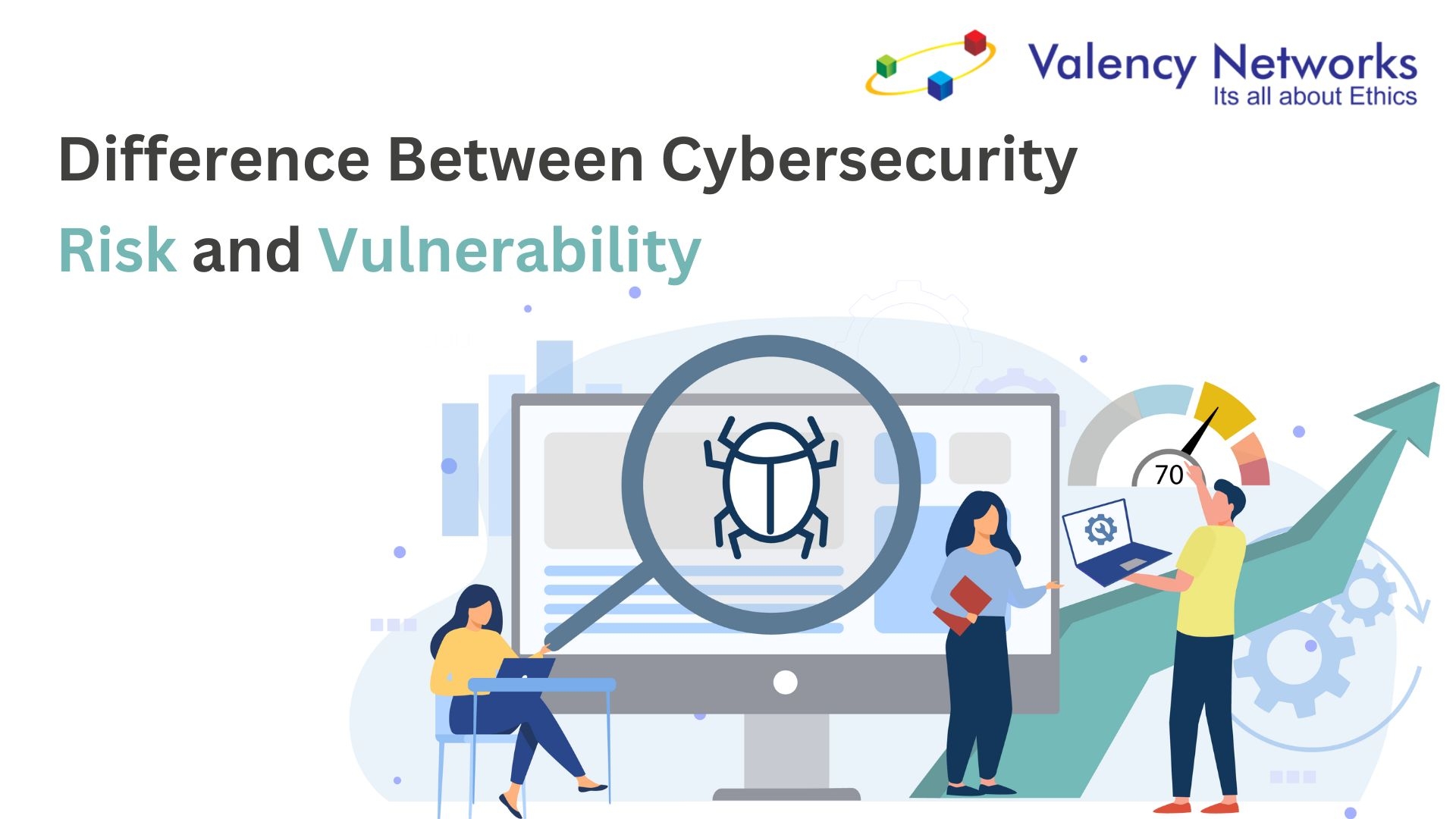- DORA Compliance – A Complete Guide by Valency Networks - 31/01/2025
- Is ICMP Timestamp Request Vulnerability worth considering - 31/12/2024
- Understanding Threat Intelligence in ISO 27001-2022 - 21/11/2024
Difference between Cybersecurity Risk and Vulnerability
Introduction:
In the ever-evolving landscape of cybersecurity, understanding the distinctions between risk and vulnerability is paramount for businesses seeking robust protection against cyber threats. This article delves into the intricacies of these concepts, emphasizing the significance of periodic penetration testing and Vulnerability Assessment and Penetration Testing (VAPT) performed by top-tier cybersecurity experts.
Cybersecurity Risk vs. Vulnerability:
Cybersecurity Risk: Cybersecurity risk refers to the potential for harm or loss resulting from a cyberattack or unauthorized access to digital assets. It encompasses the likelihood of a security breach occurring and the potential impact on an organization’s operations, reputation, and bottom line. Identifying and mitigating these risks is crucial for maintaining a secure digital environment.
Vulnerability: A vulnerability, on the other hand, is a weakness or flaw in a system’s design, implementation, or security controls that could be exploited by a threat actor. Vulnerabilities create potential entry points for cyberattacks, making them a focal point for cybersecurity professionals aiming to fortify a system’s defenses. Regularly assessing and addressing vulnerabilities is fundamental to reducing the risk of successful cyber incidents.
The Role of VAPT in Cybersecurity:
Vulnerability Assessment and Penetration Testing (VAPT): VAPT is a comprehensive cybersecurity approach that combines vulnerability assessment and penetration testing. While vulnerability assessment identifies and classifies vulnerabilities within a system, penetration testing takes it a step further by simulating real-world cyberattacks to evaluate the system’s resistance and discover potential security gaps.
Periodic Pentesting: To ensure a robust cybersecurity posture, periodic penetration testing is imperative. This involves simulating cyberattacks at regular intervals to identify new vulnerabilities and evaluate the effectiveness of existing security measures. Top cybersecurity experts employ advanced techniques and tools during pentesting to mimic the evolving tactics of cyber adversaries.
Business Risk and Cybersecurity:
Mitigating Business Risk: Understanding cybersecurity risks is crucial for mitigating broader business risks. A successful cyberattack can lead to financial losses, damage to reputation, and legal consequences. Implementing effective cybersecurity measures, informed by VAPT results, helps protect the organization’s assets and reputation, ultimately reducing business risk.
Latest Trends in Vulnerabilities:
Evolving Threat Landscape: The cybersecurity landscape is dynamic, with threat actors continually adapting their tactics. Recent trends indicate an increase in sophisticated attacks, targeting both known and emerging vulnerabilities. Staying abreast of these trends is vital for cybersecurity professionals to proactively address evolving threats.
Zero-Day Exploits: The emergence of zero-day exploits, targeting previously unknown vulnerabilities, poses a significant challenge. Cybersecurity experts must remain vigilant and leverage VAPT methodologies to discover and patch vulnerabilities before malicious actors exploit them.
Conclusion:
In the realm of cybersecurity, recognizing the distinctions between risk and vulnerability is essential for effective threat mitigation. Periodic penetration testing, facilitated by top-tier cybersecurity experts, is a proactive strategy to identify and address vulnerabilities, thereby fortifying an organization’s defense against cyber threats. Staying informed about the latest trends ensures that cybersecurity measures evolve to counter emerging threats, ultimately safeguarding business interests and digital assets.
Top of Form

